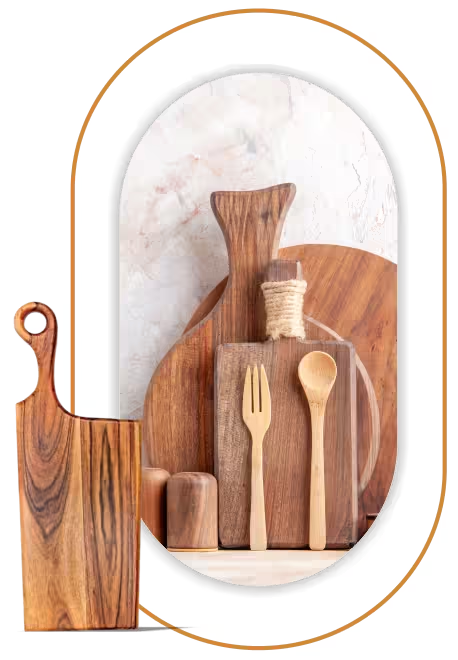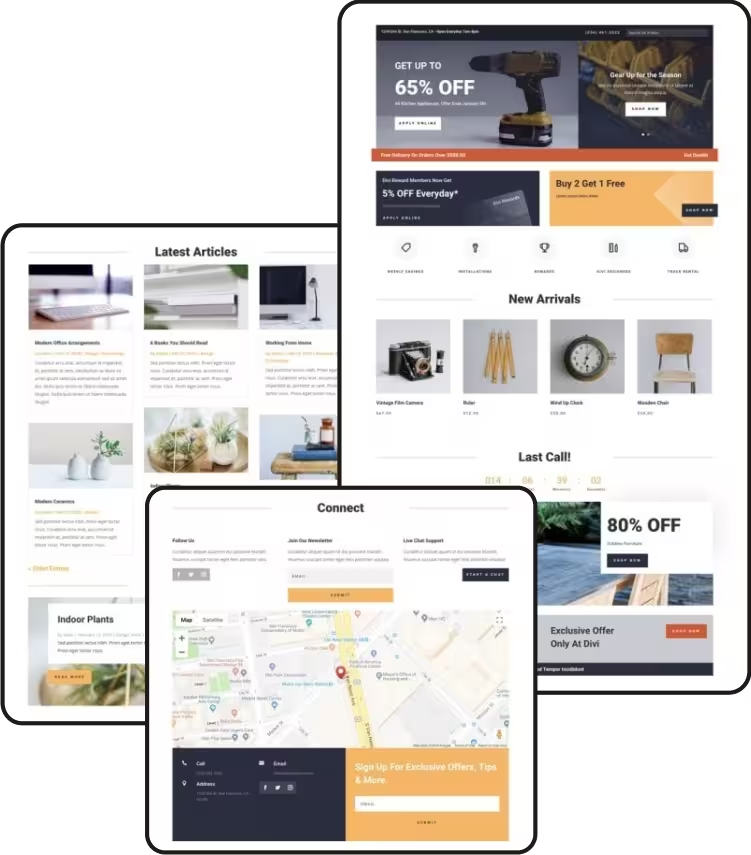How To Build An E-Commerce Website
Step By Step Guide Of Creating Websites With Greenmor
Built by Greenmor
Fundamentals To-Do List Before You Build Your Website
Level Of Importance
★★★★★ Rated 4.5 out of 5
- Domain Registration: Choose a website of your choice and availability and register your domain. Keep in mind the region you want to serve, the product, etc before deciding. For example, if your customer base is going to be primarily from India and you want to sell apparels, you can opt for a .in or a .store domain. The golden rule is to keep it short, simple and easy to write.
Some popular domain search and registrations sites in India are GoDaddy and BigRock. - Firm Registration: Check and apply for various licenses that you need to operate your business such as, GST if you do not fall in the exemption bracket, Food License if you manufacture/sell food items, Drug License if you sell cosmetics or ayurvedic products, and so on. It is mandatory to furnish various license numbers which authorise you to sell your products on your website.
- Bank Account: To collect payments you will require an active bank account. If you want to offer UPI or Wallet Payments, also setup accounts on the required apps.
Level Of Importance
★★★★★ Rated 5 out of 5
- Logo: Create your brand identity. Your logo could be your Brand Name or a Graphic or both. With or without a tagline. The recommended sizes to be kept ready are Favicon: 512 x 512 px and Header/Footer Logo: 720 x 240 px. For transparency, save your logos in .png format. You can also add animated logos in .gif formats!
- Banners: You would probably like to showcase a discount or an offer, or maybe a new product line. These are best highlighted with a banner. You will also need banners for email customisation, other website pages and your social media pages. So, it is a smart idea to keep about 4-5 banners in multiple sizes ready before you start building your website.
- Product Photographs: Each product must have about 4-5 well-taken pictures of the itself. The pictures should be high resolution (at least 1000 x 1000 px). Keep uniformity in image sizes, that is either all your products should be 1:1 or 2:3 or any other ratio you choose.
- Social Media Posts: This one is fairly easy when you have your product photos ready. It is a wise idea to decide on the theme of your social media pages and select templates that can be edited to suit your offering. This will save time, effort and also bring better brand recall.
You can try Adobe Express, Canva or Logo to build your logos/banners/posts.
Level Of Importance
★★★★★ Rated 4.5 out of 5
- Pages: Some necessary pages for an e-commerce website are Privacy Policy (generator), Terms & Conditions (generator), Shipping & Returns, About Us, Contact and Blogs (optional). These pages give information about your brand, products and sets an overall expectation from the website.
- Product Descriptions: To create a compelling product listing, there are a few key elements you should include. Each product should have a clear MRP and sale price, along with a short and long description, and a headline. Whether you’re selling on Amazon or your own website, your product description should clearly communicate what sets it apart from the competition, what unique features it offers, and what value it provides to the customer. The more informative and engaging your description is, the more likely it is to convert potential buyers. And don’t forget to make it easy to read, with a clear and concise writing style that draws in your audience.
Fundamentals To-Do List Before You Build Your Website
Level Of Importance
★★★★★ Rated 4.5 out of 5
- Domain Registration: Choose a website of your choice and availability and register your domain. Keep in mind the region you want to serve, the product, etc before deciding. For example, if your customer base is going to be primarily from India and you want to sell apparels, you can opt for a .in or a .store domain. The golden rule is to keep it short, simple and easy to write.
Some popular domain search and registrations sites in India are GoDaddy and BigRock. - Firm Registration: Check and apply for various licenses that you need to operate your business such as, GST if you do not fall in the exemption bracket, Food License if you manufacture/sell food items, Drug License if you sell cosmetics or ayurvedic products, and so on. It is mandatory to furnish various license numbers which authorise you to sell your products on your website.
- Bank Account: To collect payments you will require an active bank account. If you want to offer UPI or Wallet Payments, also setup accounts on the required apps.
Level Of Importance
★★★★★ Rated 5 out of 5
- Logo: Create your brand identity. Your logo could be your Brand Name or a Graphic or both. With or without a tagline. The recommended sizes to be kept ready are Favicon: 512 x 512 px and Header/Footer Logo: 720 x 240 px. For transparency, save your logos in .png format. You can also add animated logos in .gif formats!
- Banners: You would probably like to showcase a discount or an offer, or maybe a new product line. These are best highlighted with a banner. You will also need banners for email customisation, other website pages and your social media pages. So, it is a smart idea to keep about 4-5 banners in multiple sizes ready before you start building your website.
- Product Photographs: Each product must have about 4-5 well-taken pictures of the itself. The pictures should be high resolution (at least 1000 x 1000 px). Keep uniformity in image sizes, that is either all your products should be 1:1 or 2:3 or any other ratio you choose.
- Social Media Posts: This one is fairly easy when you have your product photos ready. It is a wise idea to decide on the theme of your social media pages and select templates that can be edited to suit your offering. This will save time, effort and also bring better brand recall.
You can try Adobe Express, Canva or Logo to build your logos/banners/posts.
Level Of Importance
★★★★★ Rated 4.5 out of 5
- Pages: Some necessary pages for an e-commerce website are Privacy Policy (generator), Terms & Conditions (generator), Shipping & Returns, About Us, Contact and Blogs (optional). These pages give information about your brand, products and sets an overall expectation from the website.
- Product Descriptions: To create a compelling product listing, there are a few key elements you should include. Each product should have a clear MRP and sale price, along with a short and long description, and a headline. Whether you’re selling on Amazon or your own website, your product description should clearly communicate what sets it apart from the competition, what unique features it offers, and what value it provides to the customer. The more informative and engaging your description is, the more likely it is to convert potential buyers. And don’t forget to make it easy to read, with a clear and concise writing style that draws in your audience.
Step 1: Global Settings + Homepage Take Your Website To The Next Level
-
Add Your LogoTime: 5 Mins
- Besides static logos, you can also add animated logo gifs in the header and footer sections to add more zing to your website!
-
Build Your HomepageTime: 15-20 Mins
- Choose, apply and edit templates from layout packs.
- Animations, scroll effects, video player, accordions, galleries, text effects and more cool features to enhance your website.
- Layouts are customised for mobile, tablet and desktop.
-
Customise Your Header & FooterTime: 15-20 Mins
- Add menus, important links, social media icons, contact, cart, subscription form or even search bars to your header and footer.
- Customise for desktop and mobile layouts.
Step 2: Setup Your Store Make Your Products Speak
-
Add Your ProductsTime: 3-4 Hours
- You can bulk upload your products as well as add them individually.
- Each product can have multiple variations such as color, size.
- Categorise your products into various heads for easy navigation.
-
Customise Your Shop PageTime: 15-20 Mins
- Choose from various templates to showcase your products.
- Have a search and filter bar for easy navigation.
- Your shop page can load infinitely on scroll or be paginated.
-
Add Offers, Shipping & ReturnsTime: 30 Mins
- Setup launch offers, seasonal discounts and referrals.
- All major Indian shippers can easily be integrated, allowing easy shipment updates.
- Want to offer returns? Set it up in just a few minutes.


Step 3: Setup Other Pages Elevating User Experience
-
Add Payment GatewayTime: 5 Mins
- Give users multiple payment options.
- Connect your payment gateway to Stripe, Paypal, UPI, Razorpay and other popular gateways.
-
Add Blogs, Contact Us & Other PagesTime: 15-20 Mins
- Choose and customise blog, contact us, privacy policy, and all other pages that you want to add.
- Get pre-made registration, account login and other forms. (Editable)
- Create as many custom forms such as subscription or contact us with premium integrations (upload attachment, add payment gateway, reCaptcha).
-
Configure EmailingTime: 15-20 Mins
- Options to choose from many popular mailers such as Gmail, AWS, Sendinblue, Outlook or configure your own SMTP to send registration, order details and other emails.
That's All Folks! And That's How In A Matter Of Hours, Your Website Goes Live
Built by Greenmor